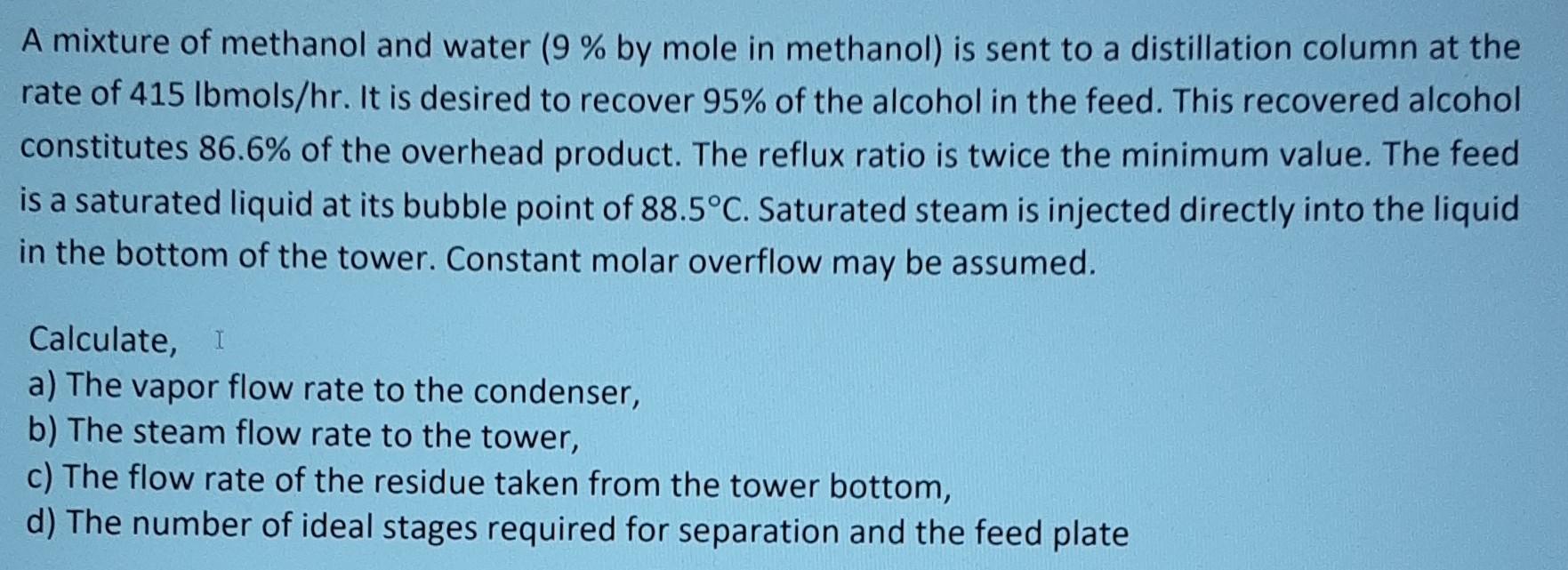Question
A mixture of methanol and water (9 % by mole in methanol) is sent to a distillation column at the rate of 415 lbmols/hr. It

A mixture of methanol and water (9 % by mole in methanol) is sent to a distillation column at the rate of 415 lbmols/hr. It is desired to recover 95% of the alcohol in the feed. This recovered alcohol constitutes 86.6% of the overhead product. The reflux ratio is twice the minimum value. The feed is a saturated liquid at its bubble point of 88.5C. Saturated steam is injected directly into the liquid in the bottom of the tower. Constant molar overflow may be assumed. Calculate, a) The vapor flow rate to the condenser, b) The steam flow rate to the tower, c) The flow rate of the residue taken from the tower bottom, d) The number of ideal stages required for separation and the feed plate
A mixture of methanol and water ( 9% by mole in methanol) is sent to a distillation column at the rate of 415lbmols/hr. It is desired to recover 95% of the alcohol in the feed. This recovered alcohol constitutes 86.6% of the overhead product. The reflux ratio is twice the minimum value. The feed is a saturated liquid at its bubble point of 88.5C. Saturated steam is injected directly into the liquid in the bottom of the tower. Constant molar overflow may be assumed. Calculate, a) The vapor flow rate to the condenser, b) The steam flow rate to the tower, c) The flow rate of the residue taken from the tower bottom, d) The number of ideal stages required for separation and the feed plateStep by Step Solution
There are 3 Steps involved in it
Step: 1

Get Instant Access to Expert-Tailored Solutions
See step-by-step solutions with expert insights and AI powered tools for academic success
Step: 2

Step: 3

Ace Your Homework with AI
Get the answers you need in no time with our AI-driven, step-by-step assistance
Get Started


